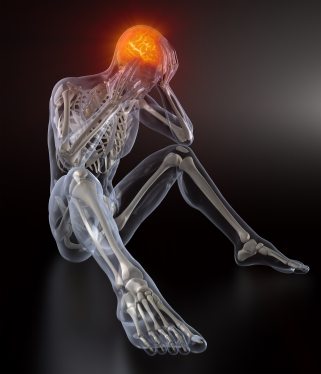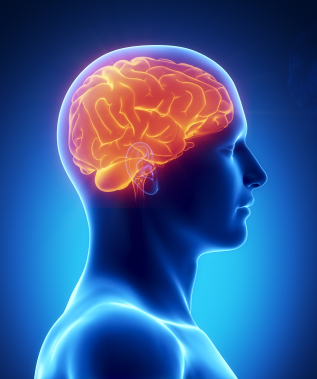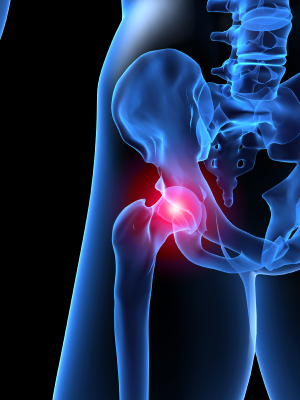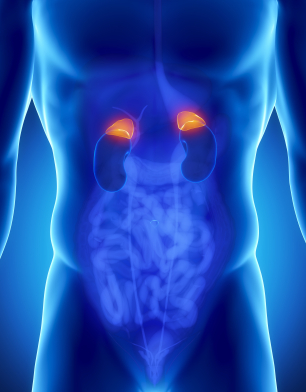Hernia is when an organ or tissue protrudes through a weak area in the surrounding muscle or connective tissue. There are different types of hernias that generally vary by location. Congenital diaphragmatic hernia (CDH) is a developmental defect of the diaphragm that permits the abdominal viscera to herniate into the chest. The amount of herniated contents may be small or large and it generally contains parts of the intestine, spleen, or liver. CDH occurs during a critical period of lung development when bronchial and pulmonary artery branching occurs so lung compression by herniated bowel can lead to pulmonary hypoplasia, which is underdevelopment of the lungs. CDH occurs in 1 out of 2200 births and in 50% of CDH cases, there are other associated anomalies such as chromosomal abnormalities, congenital heart disease, and neural tube defects.
Within the first few hours of life, infants with CDH may present with mild or severe respiratory distress that may be incompatible with life. Symptoms include bluish skin due to lack of oxygen, rapid breathing, and fast heart rate. On physical exam, patients may have a barrel-shaped chest, scaphoid appearing abdomen due to loss of abdominal contents into the chest, and absence of breath sounds on the affected side. In the majority of patients with CDH, herniation occurs on the left; therefore, the heartbeat is displaced to the right due to a shift in the mediastinum. Right sided diaphragmatic hernias occur in 11% of cases and bilateral herniation only in 2%.
The level of respiratory distress depends on the severity of lung hypoplasia. In the prenatal period, lung hypoplasia can be determined using ultrasound to evaluate herniated contents and to measure the lung area to head circumference ratio. Postpartum, there is no specific test to quantify the amount of hypoplasia. The diagnosis of CDH is generally made prenatally by ultrasound; however, in those where CDH is not diagnosed in utero, it should be suspected in any full term infant presenting with respiratory distress and the diagnosis is made by chest x-ray showing herniation of abdominal contents into the hemithorax.
For neonates diagnosed by prenatal ultrasound, the following steps for monitoring and intervention are recommended: twice weekly nonstress testing or biophysical profile testing at 33-34 weeks in addition to ultrasound examinations at 28, 30, 32, and 34-35 weeks to assess fetal growth and amniotic fluid volume. If the fetus experiences growth restriction or oligohydramnios, which is a deficiency of amniotic fluid, the baby should deliver early and betamethasone (a steroid medication that assists in preterm fetal lung development) should be given prior to delivery if the fetus is less than 34 weeks. The best mode and gestational age for delivery of a fetus with CDH is undetermined; however, the suggested time for planned induction of labor is between 38-39 weeks.
In the delivery room, infants with problematic CDH should be immediately intubated and ventilated with low peak pressure to minimize lung injury. A nasogastric tube on continuous suction is placed in the stomach for decompression of the abdominal contents, which can help expand available lung tissue. In addition, the infant should have an umbilicial artery line for monitoring of blood gases and blood pressure and possibly an umbilical vein catheter for administration of fluids and medications. Blood pressure support should be given and an echo should be done to determine cardiac abnormalities in addition to the extent of pulmonary hypertension and shunting.
Extracorporeal membrane oxygenation (ECMO) has been used as part of the treatment in some hospitals. ECMO operates as a heart-lung bypass system; thus, it does the job the heart and lungs would be doing. ECMO can be used temporarily while the infant’s condition stabilizes and improves. Once the infant is stable, he or she can undergo surgical repair of the diaphragmatic hernia, where the stomach, intestines, and other abdominal organs are returned to the abdominal cavity. The hole in the diaphragm is also repaired. If the diaphragm is absent, an artificial diaphragm will be constructed and placed. Following the operation, the infant will require breathing support due to underdevelopment of the lungs. Once the infant is taken off ventilation (breathing machine), he or she may need oxygen and medications to assist with breathing for weeks to years. Thus, CDH requires long term follow up to monitor the infant’s condition to ensure no future complications such as lung infections or other associated congenital problems. The prognosis is generally good for infants with CDH and survival is greater than 80%.




